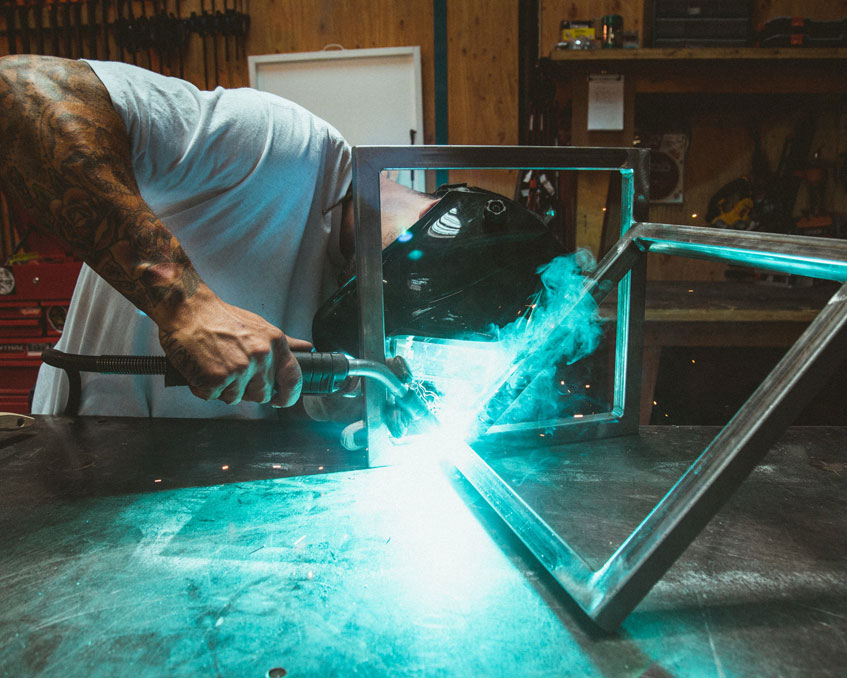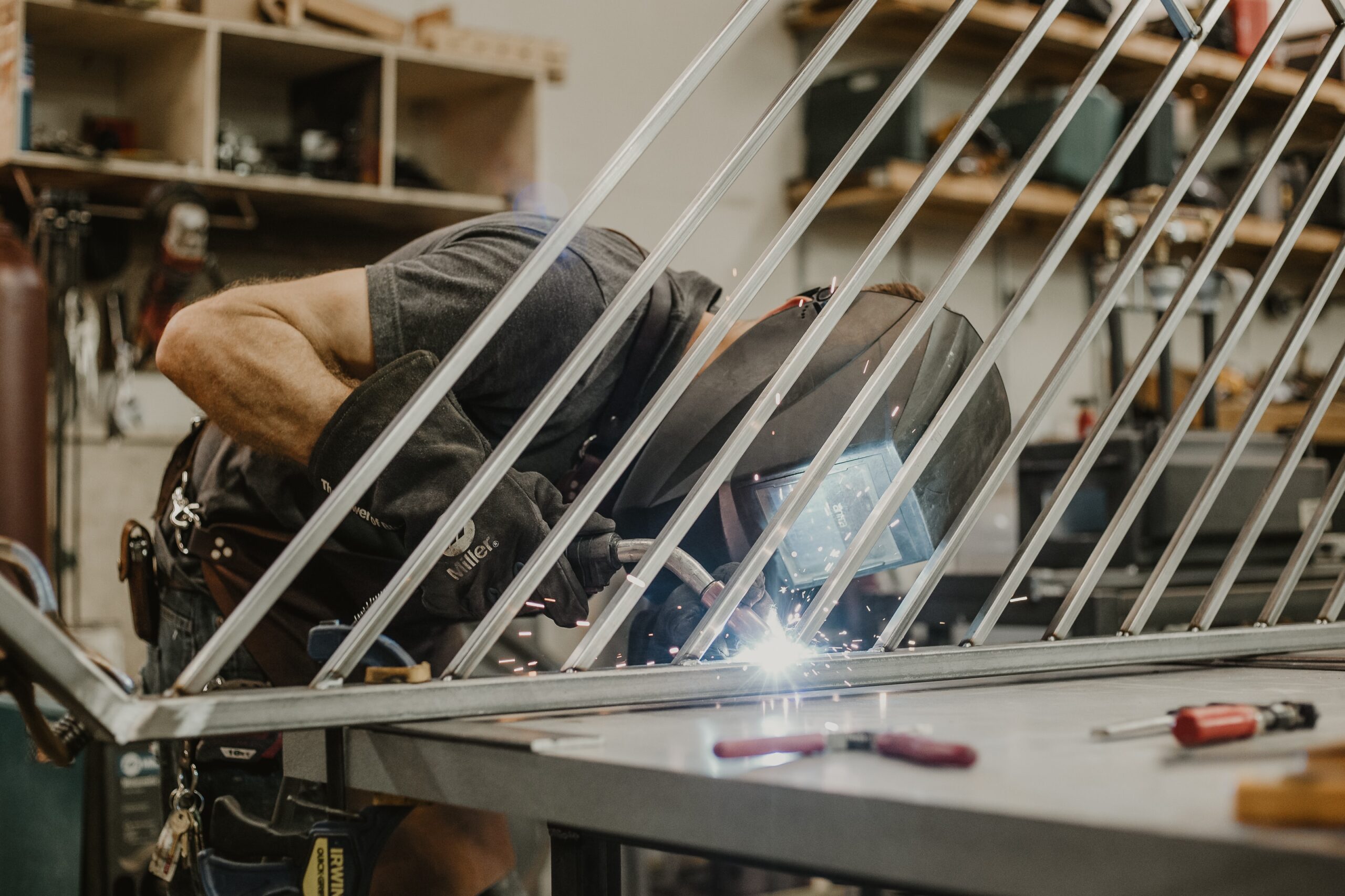What you should do when encountering porosity in Montana Mobile Welding and Repair Welding
Common Welding Repair Issues and Just How to Address Them Properly
Welding repair services often encounter a series of problems that can jeopardize the stability of the end product. Common problems include insufficient infiltration, porosity, and imbalance, to name a few. Each problem provides special difficulties that call for particular methods for resolution. Understanding these issues is essential for welders intending to boost their skills and results. This conversation will certainly discover these common welding repair service problems and reliable approaches to address them.
Inadequate Infiltration
Poor penetration takes place when the weld steel stops working to completely fuse with the base product, causing weak joints and prospective architectural failures. This concern often stems from inadequate warm input, incorrect electrode angle, or incorrect welding rate. Welders might encounter insufficient penetration as a result of a mistake of the required parameters for a particular material thickness or type. Furthermore, contamination on the base material's surface can impede reliable bonding, worsening the trouble. To address insufficient penetration, welders should ensure proper settings on their tools and keep a clean job surface. Normal evaluation of welds is suggested to determine any shortages early, enabling timely adjustments and the avoidance of jeopardized structural stability in welded assemblies.
Porosity
Porosity is an usual defect in welded joints that manifests as small gas bubbles trapped within the weld metal. This problem can compromise the honesty of the weld, causing reduced stamina and prospective failure under tension. Fabrication. Porosity commonly emerges from contamination, wetness, or improper welding techniques, which allow gases to leave into the molten weld pool. To deal with porosity, welders ought to ensure appropriate surface preparation, keep a tidy functioning setting, and make use of ideal welding parameters. Additionally, picking the appropriate filler material and securing gas can alleviate gas entrapment. Normal assessment and testing of welds can assist recognize porosity early, assuring prompt corrective actions are taken, thus preserving the quality and dependability of the welded framework
Imbalance
Misalignment in welding can arise from different factors, consisting of incorrect setup and thermal development. Understanding the origin is essential for reliable resolution. A number of adjustment strategies are readily available to straighten components and assure structural integrity.
Root causes of Imbalance
Welding misalignment commonly originates from a range of underlying issues that can compromise structural honesty. One main reason is inappropriate fit-up of elements before welding, which can result in spaces and irregular surfaces. Variants in thermal development during the welding procedure can likewise cause distortion, particularly if the materials being signed up with have different coefficients of growth. Additionally, insufficient securing and fixturing may fail to hold parts safely in position, causing motion throughout welding. Badly conserved devices, consisting of welding machines and tools, might introduce inconsistencies in the weld grain, further adding to misalignment. Operator mistake, stemming from insufficient training or experience, can additionally play a considerable role in creating misaligned welds.

Improvement Methods Offered
Dealing with imbalance successfully needs a combination of corrective methods customized to the details problems at hand. One common method is using components or jigs to hold elements in the appropriate placement during welding, guaranteeing consistent alignment. In addition, preheating the products can aid decrease distortion and improve fit-up. For substantial imbalance, mechanical realignment techniques, such as utilizing hydraulic jacks or clamps, can be used to remedy the setting before welding. Post-weld heat therapy may also be essential to relieve stresses brought on by misalignment. Mindful evaluation and modification during the setup stage can prevent imbalance issues from ending up being substantial issues, promoting a smoother welding procedure and improving total architectural stability.
Distortion
Distortion is an usual challenge in welding that can develop from numerous factors, consisting of unequal cooling and heating. Recognizing the sources of distortion is important for implementing efficient prevention methods. Addressing this issue not only boosts architectural integrity however likewise boosts the total top quality of the weld.
Root causes of Distortion
When subjected to the extreme heat of welding, products typically undergo adjustments that can bring about distortion. This sensation largely arises from thermal growth and contraction throughout the welding process. As the weld location warms up, the material broadens; upon air conditioning, it acquires, which can develop interior stress and anxieties. On top of that, irregular heating throughout a workpiece can aggravate these stress and anxieties, causing warping or flexing. The kind of product likewise plays a substantial role; steels with differing thermal conductivity and coefficients of growth may react differently, resulting in unpredictable distortions. Poor joint style and poor fixturing can contribute to misalignment during welding, enhancing the likelihood of distortion. Understanding these reasons is essential for effective welding fixing and prevention methods.
Prevention Techniques
Reliable prevention strategies for distortion during welding emphasis on managing warmth input and guaranteeing correct joint layout. Maintaining a regular warm input helps to reduce thermal expansion and contraction, which can cause distortion. Utilizing methods such as preheating the work surface can also decrease the temperature gradient, advertising uniform heating. Furthermore, picking suitable joint designs, such as T-joints or lap joints, can boost stability and decrease stress and anxiety concentrations. Applying proper fixturing to protect the work surfaces in position even more help in keeping placement throughout the welding procedure. Staggered welding series can distribute warm more uniformly, stopping localized distortion. By using these approaches, welders can significantly decrease the possibility of distortion and enhance the overall high quality of their welds.
Breaking
Splitting is a typical concern experienced in welding repair work, usually arising from numerous factors such as incorrect air conditioning prices, material option, or inadequate joint preparation. The incident of fractures can substantially endanger the stability of the weld, resulting in possible failures throughout procedure. To resolve this concern, welders must first examine the source, ensuring that products work and properly selected for the details application. In addition, regulating the cooling price during the welding process is crucial; quick air conditioning can generate stress and anxiety and cause cracking. Correct joint layout and prep work additionally add to Continued decreasing the danger. Applying these techniques can enhance weld high quality and longevity, ultimately decreasing the likelihood of breaking in completed weldments.

Insufficient Combination
A substantial problem in welding repairs is insufficient combination, which happens when the weld metal does not appropriately bond with the base material or previous weld passes - Montana Mobile Welding and Repair Welding. This flaw can bring about weaknesses in the joint, potentially jeopardizing the stability of the bonded framework. Variables adding to insufficient blend include inadequate warm input, incorrect welding strategy, and contamination of the surfaces being joined. To resolve this issue successfully, welders need to guarantee appropriate pre-weld cleaning and surface preparation, in addition to change their welding parameters to achieve appropriate infiltration and blend. Routine examination during the welding process can likewise assist recognize insufficient blend early, enabling for prompt rehabilitative measures to enhance the overall quality of the weld
Overheating
While welding repair work can improve architectural honesty, overheating provides a considerable difficulty that can result in material deterioration. Excessive warm during welding can change the mechanical properties of metals, resulting in lowered strength, boosted brittleness, and bending. This phenomenon is especially important in high-stress applications where architectural dependability is paramount. Recognizing overheating can involve visual inspections for discoloration or distortion, in addition to keeping track of temperature level throughout the welding process. To alleviate the threats connected with overheating, welders must utilize appropriate techniques, such as managing warmth input, changing traveling rate, and using suitable filler products. Furthermore, applying pre- and post-weld warm therapies can help recover product residential or commercial properties and boost the overall top quality of the fixing, ensuring lasting performance and safety and security.
Regularly Asked Concerns
What Are the Common Indicators of a Welding Issue?

How Can I Examine My Welds for Quality?
To check welds for high quality, one can utilize aesthetic inspections, ultrasonic screening, and radiographic approaches. Each strategy guarantees structural honesty, recognizes defects, and verifies adherence to defined requirements, inevitably boosting the integrity of the bonded joints.
What Safety Safety Measures Should I Take While Welding?
When welding, one should focus on safety and security by wearing ideal individual protective tools, making certain proper ventilation, safeguarding flammable products away, keeping a have a peek at these guys clean workspace, and being mindful of environments to protect against injuries and crashes.
Can I Repair a Weld Without Renovating the Entire Joint?
Repairing a weld without redesigning the entire joint is feasible, relying on the damages (Belgrade). Techniques such as grinding, including filler product, or utilizing a welding procedure can efficiently attend to certain imperfections while preserving the surrounding framework
What Equipment Are Important for Efficient Welding Fixes?
Vital devices for efficient welding repairs include a welding equipment, cord brush, grinder, protective equipment, clamps, and filler materials. Each device plays an essential function in making certain top quality and safety and security throughout the fixing procedure. Porosity normally occurs from contamination, welding tanks for sale dampness, or inappropriate welding methods, which allow gases to run away right into the molten weld pool. Inadequately maintained equipment, consisting of welding equipments and tools, may present inconsistencies in the weld grain, more adding to imbalance. When subjected to the extreme warm of welding, products commonly undertake adjustments that can lead to distortion. Fracturing is a common concern experienced in welding repairs, often resulting from numerous aspects such as incorrect air conditioning prices, material option, or inadequate joint prep work. A considerable problem in welding repair work is insufficient combination, which happens when the weld steel does not sufficiently bond with the base material or previous weld passes.